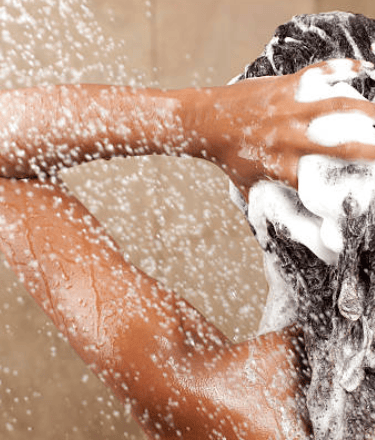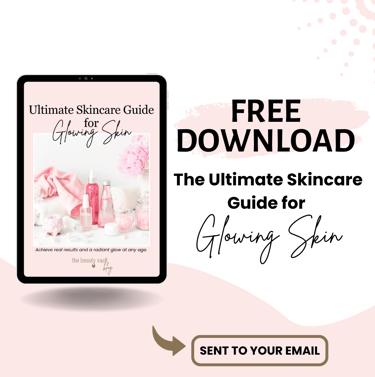The Ultimate Hair Care Guide for Healthier, Shinier, Stronger Hair
Learn how to build a healthy hair care routine that works for your hair type—plus tips for every age, clean product recommendations, and how to support hair growth from the inside out.
HAIRFEATURED
7/26/202522 min read


Understand Your Hair Type
Before you spend another dollar on shampoo, conditioner, or a styling tool—you’ve got to start here. Understanding your hair type is the key to building a hair care routine that actually works.
Think of this like skincare: you wouldn’t use acne products on dry skin, right? Same thing with hair. What works for fine, straight hair might totally weigh down thick curls—or leave coily textures craving more moisture.
So, let’s break it down:
Hair Type: The Basics
Hair type refers to the shape your strands naturally take—whether they grow in a straight line, a wave, a curl, or a tight coil. This is mostly determined by your hair follicles, and it doesn’t usually change drastically without chemicals or heat damage. Knowing your hair type helps you choose the right shampoo, conditioner, styling techniques, and even haircut.
There are four main categories of hair types:
Type 1: Straight
Type 2: Wavy
Type 3: Curly
Type 4: Coily
Each of those has subtypes (like 2A, 2B, 2C), but don’t stress—just get a general sense of where your hair falls. Wavy and curly hair tends to need more moisture and frizz control, while straight or fine hair usually wants volume and lightweight products.
👉 Tip: Your natural hair type shows best after a wash-and-air-dry with no product.
Hair Texture: Fine, Medium, or Thick
Hair texture is about the diameter of each individual strand—not how much hair you have. Fine hair feels super soft and silky, but it can be harder to hold styles or volume. Medium texture is the most common and can hold a style without being too heavy. Thick or coarse hair feels stronger and often looks fuller but can also be more prone to dryness, frizz, and tangles. Matching your product weight and hold level to your texture is key. This is about the width of each strand, not how much hair you have.
Fine: Feels silky, prone to looking flat
Medium: The “in-between” most people have
Thick/Coarse: Feels stronger, often looks fuller but can get dry fast
Helpful Products to Look Into:
Volumizing mousse or root spray (for fine hair)
Smoothing creams or rich masks (for coarse hair)
Lightweight serums (for medium texture)
Hair Porosity: How Well Your Hair Absorbs Moisture
Hair porosity is how open or closed your hair shaft is to absorbing and holding onto moisture, products, and even color. Low porosity hair has tightly closed cuticles, which makes it harder for moisture to get in—but once it does, it stays. High porosity hair (often from damage or genetics) soaks up everything fast, but loses hydration just as quickly. Understanding porosity helps you know if you need lightweight hydrators, sealing oils, or protein treatments. Porosity affects how products work and how long your hair holds onto moisture or color.
Quick test:
Drop a clean strand of dry hair into a glass of water.
Low Porosity: Floats for a long time = hair repels moisture
Medium Porosity: Floats, then sinks slowly = ideal moisture balance
High Porosity: Sinks fast = hair soaks in moisture but loses it quickly
Products to Explore:
Lightweight leave-in sprays (for low porosity)
Balancing conditioners or protein/moisture masks (for medium)
Heavy creams, oils, or butters (for high porosity)
Scalp Type: Oily, Dry, or Balanced
Your scalp is where it all begins—and just like skin types, different scalps need different care. An oily scalp might leave your roots greasy fast and need more frequent washing or clarifying products. A dry scalp can feel itchy, flaky, or tight and needs nourishment and gentle cleansing. A balanced scalp isn’t too oily or dry, and just needs regular maintenance. Scalp care is often overlooked, but it’s just as important as the products you use on your ends. This one gets overlooked all the time. But your scalp health = your hair’s foundation.
Oily scalp: May need clarifying shampoos or scalp scrubs
Dry scalp: Look for gentle, sulfate-free formulas and scalp oils
Balanced scalp: Lucky you—just don’t overload with buildup
Scalp-Smart Products to Research:
Clarifying shampoo (use once a week)
Scalp scrub or exfoliator
Tea tree or rosemary oil blends
Massaging scalp brush
Pro Tip: Your hair type can change over time due to hormones, heat damage, color processing, or even weather. Check in with your strands every few months and adjust accordingly.
Want to keep things simple? Jot down your hair type, texture, porosity, and scalp type somewhere (your phone notes work!). You’ll never waste time or money on the wrong products again.
This post contains affiliate links. That means if you click and purchase, we may earn a small commission—at no extra cost to you.


The Daily Hair Care Routine (5 Essential Steps)
When it comes to healthy hair, your daily routine matters just as much as your weekly treatments or expensive products. Think of it like brushing your teeth—you don’t need 10 steps, just the right ones done consistently.
The goal here isn’t perfection. It’s to give your hair what it needs without overdoing it. Whether you’re air-drying, heat styling, or throwing it in a messy bun (we’ve all been there), these 5 steps are your foundation.
Let’s keep it simple and effective:
Step 1 – Cleanse
Shampooing is where it all begins—but not all shampoos are created equal. Your choice should depend on your hair and scalp type. Oily scalps may need more frequent cleansing or a clarifying shampoo once a week, while dry or curly hair types may thrive on less frequent washes and co-washes (aka cleansing conditioners). And if you use a lot of products? Buildup is real.
Products to explore:
Gentle sulfate-free daily shampoo
Clarifying shampoo (1x/week)
Scalp massaging brush
Co-wash or cleansing conditioner (for curls and dry hair types)
Not sure how often to wash your hair? It actually depends on your hair type and scalp needs. We break it all down in this post about how often you should wash your hair.
Step 2 – Condition
Conditioner adds moisture, softness, and detangling power to your strands. Don’t skip this step, even if your hair is fine—just opt for a lightweight formula that won’t weigh things down. Apply mid-length to ends, and leave it on for a few minutes while you shave or body wash. Bonus points for detangling with a wide-tooth comb in the shower (always starting at the ends!).
Products to explore:
Moisture-rich conditioner (based on hair texture)
Wide-tooth comb or wet brush
Leave-in conditioner for extra softness
Step 3 – Protect
This is the step most people skip—and it’s where so much breakage and frizz can be prevented. After washing, use a leave-in conditioner or lightweight serum to help detangle and prep your hair for drying or styling. If you use hot tools, always apply a heat protectant first (yes, even on “just a quick touch-up” days).
Products to explore:
Leave-in spray or cream
Hair oil or serum (argan, jojoba, or custom blends)
Heat protectant spray or cream
Step 4 – Dry
How you dry your hair matters more than you think. Rubbing with a regular towel can rough up the cuticle and cause frizz or damage. If you’re air-drying, gently blot with a microfiber towel or old T-shirt. For blow-drying, always use medium heat and a nozzle to reduce heat damage. And if you’re into heatless curls? This is your moment.
Products to explore:
Microfiber towel or turban
Diffuser attachment for curly hair
Low-heat blow dryer or heatless curling set
Step 5 – Style
Whether you’re going sleek and straight or embracing your waves, styling should enhance—not fight—your natural hair. Choose tools and products based on the look you want and your hair’s needs. Avoid daily heat when you can, and use dry shampoo between wash days to keep things fresh.
Products to explore:
Texturizing or volumizing spray
Hair mousse or curl cream
Dry shampoo for second-day hair
Flat iron or curling wand with adjustable heat
Pro Tip: Don't underestimate consistency. You don’t need 20 products—you need a few that actually match your hair’s needs. Treat your daily routine like a reset, not a chore.


Weekly Hair Rituals for Next-Level Results
Your daily hair routine is the foundation—but what you do weekly can take your results to the next level. Think of these rituals like a Sunday reset for your strands: deeper care, more nourishment, and a chance to undo some of the damage from styling, weather, or stress.
And no—you don’t need a spa day or 10 new products. Just a few intentional steps, once or twice a week, can completely change how your hair looks and feels.
Scalp TLC: Scrubs, Oils & Massage
Healthy hair starts with a healthy scalp. If your scalp is dry, flaky, or full of buildup, your follicles can get clogged—and that can mess with growth, hydration, and shine. Once a week, give your scalp some love with a gentle exfoliating scrub or a nourishing oil massage.
Scrubs remove product buildup, excess oil, and dead skin cells.
Oils like rosemary, peppermint, or castor oil can improve circulation and hydration.
Scalp massage encourages blood flow and helps products absorb better.
Products to explore:
Scalp scrub with fine exfoliants
Scalp oil with dropper or applicator tip
Silicone scalp massager
Deep Conditioning or Hair Mask
Your regular conditioner smooths things out—but a deep conditioning mask penetrates the hair shaft to actually repair. These masks are richer, thicker, and full of ingredients like keratin, shea butter, argan oil, or coconut extract. Use once a week (or more if your hair is super dry or damaged).
Pick a mask based on what your hair needs:
Dry hair: Go for intense moisture
Damaged/bleached hair: Look for strengthening and protein repair
Frizzy hair: Choose smoothing masks with oils or silicones
Products to explore:
Moisture-rich deep conditioners
Protein masks for brittle or color-treated hair
Steam caps for extra penetration
Heat-Free Days & Protective Styles
Even the best hot tools still cause some stress to your strands. Designating at least one day a week as a “no-heat” day gives your hair a break—and lets your natural texture shine. If you’re going heatless, try overnight braids, buns, or rollers for shape and volume.
And if your hair is long, curly, or textured? Protective styles (like twists, buns, braids, or silk scarves) can help prevent tangles and reduce breakage overnight.
Products to explore:
Heatless curlers or rollers
Silk or satin scrunchies
Leave-in cream for smoothing flyaways
Silk hair wrap or bonnet
Detox or Clarify (But Not Too Often)
If you use a lot of products (hello dry shampoo, texture spray, and leave-ins), your hair probably needs a reset once in a while. A clarifying shampoo strips away all that buildup and gives you a clean slate—but too much can dry your hair out. Once every 1–2 weeks is plenty for most hair types.
Products to explore:
Clarifying shampoo (sulfate-free if possible)
Apple cider vinegar rinse
Pre-shampoo scalp treatments
Pro Tip: Make it a ritual, not a chore. Light a candle, throw on a hair mask, and make your weekly hair time something you actually look forward to. Your future hair will thank you.


Hair Through the Decades (How Your Hair Changes & What to Do)
Just like your skin and hormones, your hair evolves with each season of life. What worked in your teens might leave your 30-something strands feeling dry, flat, or suddenly “off.” The truth is: your hair has different needs as you age—and it’s totally normal.
This guide will help you understand what’s happening, why it matters, and what products or habits can support your strands at every stage.
Teens (Hormones & Habits)
This is the “trial and error” phase. Hormones are fluctuating, which can lead to an oily scalp, breakouts along the hairline, or even early hair thinning (especially with tight ponytails or heat tools). Many teens also experiment with color, bleach, and flat irons—sometimes daily.
What helps:
Gentle shampoo for oil control
Avoid over-washing
Light leave-ins or detangling sprays
Teach healthy heat tool habits early
Products to explore:
Oil-balancing shampoo
Detangling brush or spray
Lightweight conditioner
Silicone heat protectant
20s (Color, Heat & Busy Schedules)
This is the era of highlights, lowlights, balayage, blowouts, and dry shampoo. Between jobs, school, and social events, your routine might be fast—but your hair is paying attention. This decade is about prevention: start protecting it now to avoid breakage and dullness later.
What helps:
Strengthening masks once a week
Heat protectants before every tool
Clarifying shampoo to remove buildup
Daily brushing (yes, it helps circulation!)
Products to explore:
Bond-building treatment or mask
Clarifying shampoo (weekly)
Paddle brush or boar-bristle brush
30s (Postpartum Hair Loss & Stress Shedding)
Whether you’ve had babies or not, the 30s are often when people first notice a real change in volume, texture, or shedding. Hormonal shifts, nutrient depletion, and stress all play a role—and your once “normal” hair might now feel drier, thinner, or harder to grow out.
What helps:
Scalp massage and stimulation
Nutritional support (think biotin, collagen, peptides)
Lightweight volumizing products
Less heat, more protective styling
Products to explore:
Hair growth serum or scalp oil
Volumizing mousse or root spray
Hair supplements with biotin + collagen
MAKE Wellness FIT or LEAN peptides
40s & 50s+ (Thinning, Grays, & Texture Changes)
This is when many women notice more visible thinning, hormonal changes (hello, perimenopause), and a natural shift in hair texture. You might also see more grays, which are often drier and wirier than your original strands. Hydration and scalp health become non-negotiable here.
What helps:
Deep moisture masks weekly
Scalp exfoliation or oiling
Root touch-up products for in-between color
Style-enhancing sprays for volume + shine
Products to explore:
Moisture-rich leave-in or mask
Scalp scrub or rosemary oil
Gray-blending or root touch-up spray
Shine serum or styling cream
Pregnancy & Postpartum Hair
Hormones go wild during this time—which means thick, shiny hair during pregnancy and often shedding (sometimes a lot) postpartum. This is completely normal, but it can still feel emotional and frustrating. Be gentle with your hair during this phase and support your body from the inside out.
What helps:
Low-manipulation styles
Nutrient support (vitamin D, collagen, protein)
Hydration inside and out
Soft brushes and minimal heat
Products to explore:
Postpartum hair supplements
Prenatal or postnatal multivitamin with biotin
Soft bristle brush or detangler
MAKE Wellness HYDRATED + CALM peptides
Pro Tip: If your hair suddenly changes texture or starts shedding more than usual, check in with your body. Hair is often the first place we see signs of stress, nutrient deficiencies, or hormonal imbalances.


Eat, Sleep, De-Stress: Internal Beauty for Healthy Hair
Beautiful hair doesn’t just come from a bottle—it starts inside your body. Your hair is made of protein, fueled by nutrients, and heavily impacted by things like sleep, stress, and hydration. If your body is running low on essentials, your hair is often one of the first places it shows.
The good news? You don’t need a perfect diet or a million supplements to see results—just a few intentional shifts can make a big difference in how your hair looks, feels, and grows.
Protein, Collagen & Peptides
Hair is made mostly of keratin, a protein built from amino acids. If your body isn’t getting enough protein (especially after illness, stress, or postpartum), your hair can become weak, brittle, or shed more than usual. Collagen and peptides can help support healthy hair growth by feeding your follicles the building blocks they need.
What helps:
Collagen peptide powders
Protein-rich meals or smoothies
Daily peptide support (like FIT or LEAN from MAKE Wellness)
Products to explore:
Hydrolyzed collagen powder (flavorless or vanilla)
Whey or plant-based protein powder
MAKE Wellness FIT and LEAN peptides
Vitamins & Minerals That Matter
You don’t need a dozen pills a day—but there are a few key nutrients that play a direct role in your hair’s health. Here’s what to keep an eye on:
Biotin: Popular for hair growth, but works best when paired with other B vitamins
Vitamin D3: Most of us are deficient, and it’s critical for hormone balance and healthy follicles
Zinc & Iron: Help with hair strength and oxygen delivery to the scalp
Methylated B12: Especially important if you’re vegan, vegetarian, or low energy
Products to explore:
Biotin gummies or multivitamin with B-complex
Methyl B12 drops or capsules
Vitamin D3 + K2 combo (like Biote ADK 10—this one’s my personal go-to!)
Hair-focused multivitamin or mineral support
Sleep, Stress & Hormones
If your hair is shedding or thinning—and you’ve ruled out the basics—look at your stress levels and sleep habits. Chronic stress can push hair into the shedding phase early (called telogen effluvium), and poor sleep disrupts hormone balance that supports healthy growth.
Stress also spikes cortisol, which can throw off your thyroid, blood sugar, and even iron levels—aka the stuff your hair really needs.
What helps:
Prioritizing 7–8 hours of sleep
Short daily movement or gentle workouts
Supplements that support calm + sleep
Saying no more often (yep, that’s part of hair care too)
Products to explore:
Magnesium glycinate
MAKE Wellness CALM peptide
Adaptogen blends with ashwagandha
Weighted sleep mask or white noise machine
Pro Tip: Your hair is a reflection of what’s happening on the inside. When in doubt, support your body first—your hair will follow.

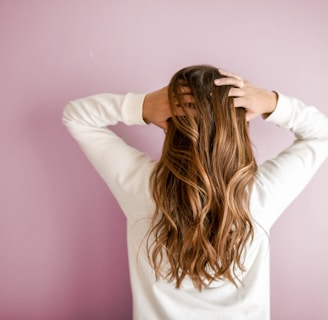
Hair Myths, Busted!
The internet is full of hair advice—and let’s be honest, some of it just won’t go away no matter how outdated it is. If you've ever felt confused about how often to wash, whether trims actually help your hair grow, or if cold water makes your hair shinier... you're not alone.
Let’s break down a few of the most common myths, so you can stop second-guessing and start focusing on what really works.
Myth: "Trimming Your Hair Makes It Grow Faster"
Not exactly. Trimming doesn’t affect your hair follicles or how fast they grow—but it does remove split ends, which prevents breakage and gives the illusion of healthier, longer hair over time. So yes, regular trims are still worth it... just not for boosting growth.
What to do instead:
Focus on scalp health, internal nutrients, and gentle styling to truly support growth.
Myth: “You Should Shampoo Every Day”
For most hair types, daily washing can actually strip your scalp of its natural oils—leading to dryness, irritation, or even oil overproduction as your scalp tries to compensate. The “right” wash schedule depends on your scalp type, hair texture, and how much product or sweat you deal with daily.
Want help figuring it out? We wrote a whole post on this:
👉 How Often Should You Wash Your Hair?
Myth: “Cold Water Makes Hair Shinier”
Kind of. Cold water doesn’t add shine by itself, but it can help seal the cuticle after conditioning, which may reduce frizz and enhance light reflection. That said, it’s more of a bonus than a must. Focus on moisturizing products, heat protection, and regular conditioning for true shine.
Myth: “Hair Oils Are Only for Thick or Curly Hair”
Nope! Oils can be used on any hair type—it’s all about how and where you apply them. Fine or straight hair types can use a tiny drop on ends only, while thicker hair might benefit from heavier application or pre-wash oiling.
Myth: “You Can Repair Split Ends”
Unfortunately, once the strand is split, it's split. No product can glue it back together permanently—only a trim will truly fix it. But the good news? You can prevent them with regular moisture, low heat, and protective styling.
Products to explore:
Split-end mending serums (for temporary smoothing)
Leave-in treatments with protein or ceramides
Silk pillowcases or bonnets for overnight care
Pro Tip: Not everything trending on TikTok belongs in your routine. When in doubt, come back to science, your hair type, and what actually feels good for your strands.

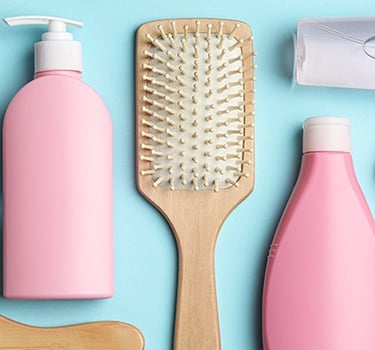
Product Round-Up: Everything We Mentioned
Here’s your go-to list of everything we talked about in this guide—organized by category so you can easily find what fits your hair’s needs.
This post contains affiliate links. That means if you click and purchase, we may earn a small commission—at no extra cost to you.
The Daily Hair Care Routine (5 Essential Steps)
Step 1 – Cleanse
Olaplex No. 4C Bond Maintenance Clarifying Shampoo – great for product buildup and oily scalps
Redken Color Extend Magnetics Shampoo – color-safe and gentle
Pureology Hydrate Shampoo – ideal for dry or color-treated hair
Redken All Soft Mega Curls Shampoo – great for very dry, curly/coily hair
Paul Mitchell Shampoo One – classic, balanced for most hair types
SEBAMED Everyday Shampoo – sensitive scalp-friendly
Kerastase Curl Manifesto Hydration Douceur – for wavy/curly textures
CURLSMITH Curl Quenching Conditioning Wash – perfect for co-washing (non-lathering)
Briogeo Scalp Revival Micro-Exfoliating Shampoo – charcoal + coconut oil blend
dpHUE Apple Cider Vinegar Rinse – for gentle detox without stripping color
Step 2 – Condition
Olaplex No. 5 Bond Maintenance Conditioner – strengthens and softens
Olaplex No. 6 Bond Smoother Leave-In – great for frizz control and hydration
COLOR WOW Dream Coat – frizz-fighting leave-in + styling protectant
SheaMoisture Raw Shea Butter Deep Treatment Masque – budget-friendly, rich moisture
Amika Soulfood Nourishing Mask – lightweight but deep conditioning
K18 Leave-In Molecular Repair Mask – highly rated for color/bleached hair repair
Step 3 – Protect
Olaplex No. 6 – doubles as heat protectant + frizz control
COLOR WOW Dream Coat Supernatural Spray – cult-favorite for anti-humidity and sleekness
Kenra Thermal Styling Spray – reliable heat protection up to 428°F
Verb Ghost Oil – for lightweight shine and smoothing
Ouai Texturizing Hair Spray – light hold and volume boost
Step 4 – Dry
Kitsch Microfiber Hair Towel Wrap – designed to reduce frizz and drying time.
2 pack Microfiber Hair Turban – reduce breakage and protect the hair cuticle.
Hairizone Universal Hair Diffuser – Fits most dryers and has great airflow control.
Revlon Infrared Heat Hair Dryer – Affordable but packed with features to protect against damage.
Shark HyperAIR Hair Dryer – Quiet, fast, and built-in technology to measure heat and protect hair.
Dyson Supersonic Hair Dryer – The gold standard—powerful, quiet, low-damage, but $$$.
Kitsch Satin Heatless Curling Set – Chic, comfortable, and designed for overnight curls with minimal effort.
RobeCurls Curling Headband – A viral TikTok favorite.
Step 5 – Style
Ouai Texturizing Hair Spray – Adds volume + texture without stiffness. Smells amazing.
Amika Un.Done Volume and Matte Texture Spray – Great for lift at the roots or creating that “beachy” look.
John Frieda Volume Lift Air Whipped Foam – Lightweight mousse for fine to medium hair.
CURLSMITH Curl Defining Styling Soufflé – Curl cream/gel hybrid—moisturizes and holds, no crunch.
Moroccanoil Curl Defining Cream – Rich, hydrating, and great for thicker curls or dry hair types.
Batiste Dry Shampoo (Original or Bare Scent) – Budget-friendly, effective, and widely available.
Living Proof Perfect Hair Day Dry Shampoo – Actually cleans hair, not just masks oil. No heavy residue.
IGK First Class Charcoal Detox Dry Shampoo – Extra-strong oil absorption for oily scalps or gym days.
Hot Tools Pro Signature Ceramic Digital Flat Iron – Salon-level results at a mid-range price. Adjustable heat.
CHI Original Ceramic Hairstyling Iron – OG favorite for sleek styles—simple but dependable.
Bed Head Curlipops Curling Wand (budget pick) Tourmaline ceramic barrel, heats fast, simple temp control.
T3 SinglePass Curling Iron (luxury option) Beautiful design, even heat, less damage.
Weekly Hair Rituals for Next-Level Results
Scalp TLC: Scrubs, Oils & Massage
Briogeo Scalp Revival Micro-Exfoliating Shampoo – charcoal + coconut oil blend
dpHUE Apple Cider Vinegar Scalp Scrub – Gentle salt-based exfoliant with ACV to balance scalp pH
Kristin Ess Instant Exfoliating Scalp Scrub – Sugar-based exfoliant that foams when water is added.
Mielle Organics Rosemary Mint Scalp & Hair Strengthening Oil – Lightweight, invigorating, great for growth
The Ordinary Multi-Peptide Serum for Hair Density– Lightweight and non-greasy, to boost scalp health
CURLSMITH Scalp Stimulating Booster – tip is easy to target the roots; packed with natural ingredients.
Deep Conditioning or Hair Mask
Amika Soulfood Nourishing Mask – lightweight but deep conditioning
SheaMoisture Manuka Honey & Mafura Oil Intensive Hydration Hair Masque – super moisturizing
Moroccanoil Intense Hydrating Mask– Argan oil-based, smooths and deeply hydrates
Olaplex No. 3 Hair Perfector– Bond-building treatment that repairs broken keratin bonds
Redken Extreme Strength Builder Plus Hair Mask – protein + ceramides to strengthen color-treated hair.
ApHogee Two-Step Protein Treatment – For seriously damaged or chemically-treated hair.
Glow by Daye Cordless Deep Conditioning Heat Cap – Heat-activated cap, just microwave and wear.
Heat-Free Days & Protective Styles
Kitsch Satin Heatless Curling Set – Chic, comfortable, and designed for overnight curls with minimal effort.
RobeCurls Curling Headband – A viral TikTok favorite.
Conair Soft Foam Rollers – Classic throwback! Affordable, great for gentle curls on all hair types.
Kitsch Satin Scrunchies (5-Pack) – Super gentle, no dents or breakage—perfect for sleeping or loose styling.
Slip Pure Silk Skinny Scrunchies – 100% mulberry silk and luxury feel—great for gifting or everyday glam.
Olaplex No. 6 – doubles as heat protectant + frizz control
CURLSMITH Weightless Air Dry Cream – Moisturizing and curl-defining, great for waves or frizz-prone hair.
YANIBEST Silk Sleep Cap for Curly Hair – Budget-friendly and comfortable with elastic band.
Detox or Clarify (But Not Too Often)
Olaplex No. 4C Bond Maintenance Clarifying Shampoo – great for product buildup and oily scalps
Living Proof Triple Detox Shampoo – Uses charcoal to remove product, pollution, and hard water minerals.
Kenra Clarifying Shampoo – Stronger clarifier, ideal for swimmers or heavy product users. Use 1x/week.
dpHUE Apple Cider Vinegar Rinse – for gentle detox without stripping color
WOW Skin Science Apple Cider Vinegar Shampoo – clarifying shampoo with ACV, good for oily/flaky scalps.
Briogeo Scalp Revival Charcoal + Tea Tree Treatment – detoxifying drops for itchy, flaky, or oily scalps
JVN Pre-Wash Scalp Oil – Nourishing blend with rosemary, helps detox, hydrate, and rebalance.
Hair Through the Decades
Teens (Hormones & Habits)
Aveda Rosemary Mint Purifying Shampoo – Gently purifies oily scalps while soothing and rebalancing.
Kristin Ess Deep Clean Clarifying Shampoo – Affordable and effective for removing buildup and balancing oil
Neutrogena Clarify & Shine Shampoo – gentle enough for frequent use, and budget-friendly.
Mielle Kalahari Melon & Aloe Vera Multi-Tasking Leave In Conditioner
COLOR WOW Dream Coat Supernatural Spray – cult-favorite for anti-humidity and sleekness
Kenra Thermal Styling Spray – reliable heat protection up to 428°F
20s (Color, Heat & Busy Schedules)
Kristin Ess Deep Clean Clarifying Shampoo – Affordable and effective for removing buildup and balancing oil
dpHUE Apple Cider Vinegar Rinse – for gentle detox without stripping color
Olaplex No. 3 Hair Perfector– Bond-building treatment that repairs broken keratin bonds
Batiste Dry Shampoo (Original or Bare Scent) – Budget-friendly, effective, and widely available.
Living Proof Perfect Hair Day Dry Shampoo – Actually cleans hair, not just masks oil. No heavy residue.
Ouai Texturizing Hair Spray – Adds volume + texture without stiffness. Smells amazing.
Amika Un.Done Volume and Matte Texture Spray – Great for lift at the roots or creating that “beachy” look.
Diane 100% Boar Bristle Brush – Helps distribute scalp oils and reduce oil buildup between washes
30s (Postpartum Hair Loss & Stress Shedding)
Pureology Hydrate Shampoo – ideal for dry or color-treated hair
Paul Mitchell Shampoo One – classic, balanced for most hair types
Olaplex No. 4 Bond Maintenance Shampoo– Repairs broken hair bonds from heat, color, or hormones
Olaplex No. 3 Hair Perfector– Bond-building treatment that repairs broken keratin bonds
Redken Extreme Strength Builder Plus Hair Mask – protein + ceramides to strengthen color-treated hair.
Mielle Organics Rosemary Mint Scalp & Hair Strengthening Oil – Lightweight, invigorating, great for growth
The Ordinary Multi-Peptide Serum for Hair Density– Lightweight and non-greasy, to boost scalp health
John Frieda Volume Lift Air Whipped Foam – Lightweight mousse for fine to medium hair.
Ouai Texturizing Hair Spray – Adds volume + texture without stiffness. Smells amazing.
Muscle + Metabolic Collection – peptide support for healthy hair growth, muscle tone, metabolism, and cellular repair from within.
Collagen Peptides – Strengthens hair strands and boosts elasticity by restoring the body’s natural collagen
Biote ADK 10–support scalp circulation and hair follicle strength with a powerful blend of vitamins A, D, K
Methyl B Complex –A full-spectrum B vitamin blend that supports energy, stress resilience, and the nutrients needed for healthy hair follicles.
40s & 50s+ (Thinning, Grays, & Texture Changes)
Pureology Hydrate Shampoo – ideal for dry or color-treated hair
Paul Mitchell Shampoo One – classic, balanced for most hair types
Olaplex No. 4 Bond Maintenance Shampoo– Repairs broken hair bonds from heat, color, or hormones
Nioxin Cleanser Shampoo System 2–promote thicker-looking hair by cleansing follicle-clogging sebum
Amika Soulfood Nourishing Mask – lightweight but deep conditioning
Moroccanoil Intense Hydrating Mask– Argan oil-based, smooths and deeply hydrates
Olaplex No. 6 – doubles as heat protectant + frizz control
Briogeo Scalp Revival Micro-Exfoliating Shampoo – charcoal + coconut oil blend
COLOR WOW Dream Coat Supernatural Spray – cult-favorite for anti-humidity and sleekness
Verb Ghost Oil – for lightweight shine and smoothing
L’Oréal Magic Root Cover Up Spray – Quick fix between color appointments
Clairol Root Touch-Up Temporary Hair Color Gel – No mess, brush-on formula
Pregnancy & Postpartum Hair
Paul Mitchell Shampoo One – classic, balanced for most hair types
Pureology Hydrate Shampoo – ideal for dry or color-treated hair
Redken All Soft Mega Curls Shampoo – great for very dry, curly/coily hair
The Ordinary Multi-Peptide Serum for Hair Density– Lightweight and non-greasy, to boost scalp health
Mielle Organics Rosemary Mint Scalp & Hair Strengthening Oil – Lightweight, invigorating, great for growth
Vegamour GRO Hair Serum – serum with no hormones or toxic ingredients, reduce shedding
Amika Soulfood Nourishing Mask – lightweight but deep conditioning
Olaplex No. 3 Hair Perfector– Bond-building treatment that repairs broken keratin bonds
WetBrush Original Detangler Black– Gentle on fragile postpartum hair
Kitsch Satin Scrunchies (5-Pack) – Super gentle, no dents or breakage—perfect for sleeping or loose styling.
Kitsch Satin Heatless Curling Set – Chic, comfortable, and designed for overnight curls with minimal effort.
Collagen Peptides – Strengthens hair strands and boosts elasticity by restoring the body’s natural collagen
Muscle + Metabolic Collection – peptide supports hair growth, metabolism, and recovery post-baby
Nutrafol Postpartum Hair Growth Supplement– Formulated specifically for new moms, OBGYN-developed, breastfeeding-safe.
Seeking Health Optimal Prenatal– Clean formula with no artificial colors, soy, or gluten
CALM Peptide – Helps reduce stress-induced shedding by supporting deeper sleep, balanced cortisol, and a calmer nervous system.
Eat, Sleep, De-Stress: Internal Beauty for Healthy Hair
Protein, Collagen & Peptides
Muscle + Metabolic Collection – peptides support lean muscle and metabolism to fuel cellular repair, including hair follicles
Collagen Peptides – Strengthens hair strands and boosts elasticity by restoring the body’s natural collagen
Primal Kitchen Collagen Fuel – Clean label and adds a bit of flavor while supporting hair, skin, and nails
Anthony’s Hydrolyzed Collagen Peptides – A clean, budget-friendly collagen that supports hair strength, elasticity, and shine from within.
Vitamins & Minerals That Matter
Biote ADK 10 – Supports hormone balance, scalp circulation, and hair follicle strength with vitamins A, D3, and K2
Methyl B Complex – Supports energy, nutrient absorption, and hair growth cycle
Pure Encapsulations Hair/Skin/Nails Ultra – Methylated B vitamins, biotin, zinc, and collagen cofactors in one formula
Thorne Basic Nutrients 2/Day – Full-spectrum, high-absorption multivitamin with methylated Bs and chelated minerals
MaryRuth Organics Biotin Gummies – promoting stronger, healthier hair without synthetic extras
Garden of Life Hair Growth Duo Caps – overall beauty support with recognizable ingredients
Sleep, Stress & Hormones
CALM Peptide – Helps reduce stress-induced shedding by supporting deeper sleep, balanced cortisol, and a calmer nervous system.
Magnesium Glycinate – Promotes relaxation and sleep; gentle on digestion
Natural Vitality CALM Magnesium Powder – Easy to sip before bed; helps quiet the nervous system
Xymogen RelaxMax Drink Mix – Used in functional medicine practices, this advanced formula targets stress and hormone-related hair changes from the inside out. A practitioner-grade blend of magnesium, inositol, and calming amino acids to reduce stress-related shedding and promote restful sleep.
Natural Vitality CALM Gummies – A tasty, non-GMO gummy that helps reduce stress-related shedding by supporting magnesium levels and better sleep.
Gaia Herbs Adrenal Health Daily Support – Adaptogenic blend (ashwagandha, holy basil) to regulate stress
MZOO Contoured Sleep Eye Mask – For restful sleep (and major “treat yourself” vibes)
Hair Myths, Busted!
Myth: "Trimming Your Hair Makes It Grow Faster"
What to do instead:
Muscle + Metabolic Collection – peptides support lean muscle and metabolism to fuel cellular repair, including hair follicles
Collagen Peptides – Strengthens hair strands and boosts elasticity by restoring the body’s natural collagen
Primal Kitchen Collagen Fuel – Clean label and adds a bit of flavor while supporting hair, skin, and nails
The Ordinary Multi-Peptide Serum for Hair Density– Lightweight and non-greasy, to boost scalp health
Mielle Organics Rosemary Mint Scalp & Hair Strengthening Oil – Lightweight, invigorating, great for growth
Myth: “You Should Shampoo Every Day”
Not sure how often you should shampoo? Check out our full guide:
👉 How Often Should You Wash Your Hair?
What to do instead:
Pureology Hydrate Shampoo – ideal for dry or color-treated hair
Batiste Dry Shampoo (Original or Bare Scent) – Budget-friendly, effective, and widely available.
Living Proof Perfect Hair Day Dry Shampoo – Actually cleans hair, not just masks oil. No heavy residue.
Myth: “Cold Water Makes Hair Shinier”
What to do instead:
Olaplex No. 6 Bond Smoother – doubles as heat protectant + frizz control
COLOR WOW Dream Coat Supernatural Spray – cult-favorite for anti-humidity and sleekness
Moroccanoil Intense Hydrating Mask– Argan oil-based, smooths and deeply hydrates
ZIMASILK 100% Pure Mulberry Silk Pillowcase– for Hair and Skin Health, Soft and Smooth
Myth: “Hair Oils Are Only for Thick or Curly Hair”
What to do instead:
Mielle Organics Rosemary Mint Scalp & Hair Strengthening Oil – Lightweight, invigorating, great for growth
Verb Ghost Oil – for lightweight shine and smoothing
Myth: “You Can Repair Split Ends”
What to do instead:
Olaplex No. 3 Hair Perfector– Bond-building treatment that repairs broken keratin bonds
Olaplex No. 6 Bond Smoother Leave-In – great for frizz control and hydration
Redken Extreme Strength Builder Plus Hair Mask – protein + ceramides to strengthen color-treated hair.
K18 Leave-In Molecular Repair Mask – highly rated for color/bleached hair repair
COLOR WOW Dream Coat Supernatural Spray – cult-favorite for anti-humidity and sleekness
Kenra Thermal Styling Spray – reliable heat protection up to 428°F
ZIMASILK 100% Pure Mulberry Silk Pillowcase– for Hair and Skin Health, Soft and Smooth


Final Thoughts
Healthy hair isn’t about doing everything—it’s about doing the right things for your hair. Whether you’re dealing with postpartum shedding, dryness, frizz, or just want to build a better routine, remember: your hair responds to consistency, care, and a little patience.
✨ You don’t need 20 products.
✨ You don’t need perfect hair days.
✨ You just need the right support—inside and out.
Give your hair grace, give it time, and most importantly—give it love.
What’s Next?
Want to shop everything we mentioned?
Head to our full Product Round-Up here
Still figuring out your hair type or wash schedule?
📖 Check out our post: How Often Should You Wash Your Hair?
And don’t forget—your beauty journey is your story. We’re just here to help you write it with a little more shine ✨
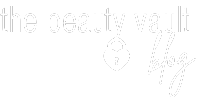

© 2025 The Beauty Vault. All Rights Reserved.
Luxury. Beauty. Unlocked.
This website may include affiliate links to various companies. When you make a purchase through these links, we may receive a small commission, at no additional cost to you.
Medical Disclaimer:
The information provided on this website is for educational purposes only and is not intended to diagnose, treat, cure, or prevent any disease. Always consult with a qualified healthcare professional before starting any new supplement, diet, or wellness program.

